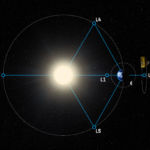The European Space Agency has adopted the implementation concept for the Ariel space telescope. This will be the first mission to specifically examine the nature, origin, and evolution of exoplanets. Hungarian researchers and engineers are also participating in the implementation of the program, including the employees of Admatis. The Ariel mission payload is developed by a consortium of more than 50 institutes from 17 ESA countries – which include the UK, France, Italy, Poland, Belgium, Spain, the Netherlands, Austria, Denmark, Ireland, Czech Republic, Hungary, Portugal, Norway, Sweden, Germany, Estonia – plus a NASA contribution. Ariel will be the first mission dedicated to measuring the chemical composition and atmospheric thermal properties of hundreds of transiting exoplanets. Ariel will give us a picture of a diverse range of exoplanets: from extremely hot to temperate, from gaseous to rocky planets orbiting close to their parent stars.
Admatis Kft. – as the leader of a larger Hungarian supplier team – will supply on-board equipment and equipment for the construction and ground logistics tasks of Ariel. A special radiator is built into the spacecraft, the function of which is to control the temperature of critical devices inside the satellite, typically the detector and electronics, very precisely. Three containers will also be built to transport the space telescope by road across Europe, ensuring the right temperature and vibration-free environment for the hundreds of millions of euros of satellite it contains – all in clean room conditions. The production of various mounting frames, positioning equipment and scaffolds to be used for the assembly of the spacecraft in England will also be a Hungarian contribution. The implementation of Hungarian participation in the Ariel program is supported by the Ministry of Foreign Affairs and Trade through the ESA PRODEX program.
The full article can be read here.
You can access the Ariel Space Mission official website here.

